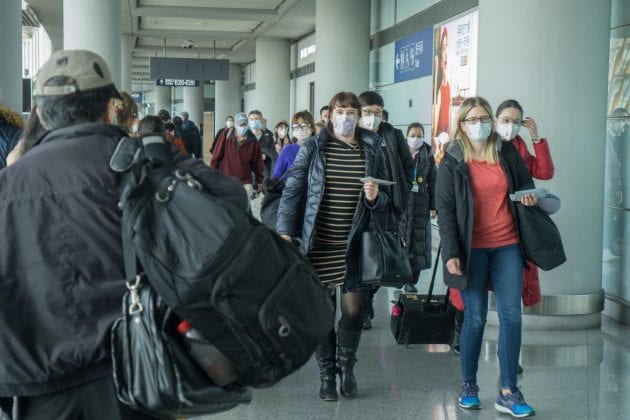
Did coronavirus come from Wuhan? Expert team to throw some light soon
An international team of scientists, who are at the tail end of their investigations in China, will shortly release their findings and shed some light on the multi-million dollar question - on how the deadly coronavirus pandemic broke out in the world.

An international team of scientists who are at the tail end of their investigations in China will shortly release their findings and shed some light on the multi-million dollar question of how the deadly coronavirus pandemic that affected the whole world break out.
A 14-member World Health Organisation (WHO) team has been in China since last month investigating the source of the coronavirus, and how it spread so rapidly, leaving 2.5 million dead and wreaking economic chaos worldwide. The team has also ostensibly found “important clues” on the role of Wuhan’s seafood market in the outbreak.
A Bloomberg report quoting one of the WHO team members, New York-based zoologist Peter Daszak, said that the main findings will be released before the team’s departure on February 10. And, though it takes many years to determine the complicated and complex journey of viruses to humans, the scientists have “some real clues” about what happened and a solid explanation will be made before the end of their trip.
Also read: WHO team starts Wuhan virus probe
Last month, the WHO team had landed in the central Chinese city of Wuhan to search for vital clues that could solve the mystery behind how the coronavirus was transmitted to humans. The mission launched its investigation in Wuhan, since this industrial and transportation hub was the first place where a known case of the coronavirus had emerged. Though scientists admit that it is possible that the virus came to Wuhan undetected from elsewhere, the city of 11 million was a logical place for the team to begin its probe.
To pin down the animal sources of an outbreak reportedly requires massive amounts of research, including taking animal samples, genetic analysis and epidemiological studies.
As Daszak told Bloomberg, they hope this is the beginning of getting a deep understanding of what happened to avoid and stop the next one. “That’s what this is all about — trying to understand why these things emerge so we don’t continually have global economic crashes and horrific mortality while we wait for vaccines. It’s just not a tenable future,” he had said.
The team visited hospitals, the Wuhan seafood market (the centre of world attention), and disease control centres, such as the Hubei Provincial Center for Disease Control that had an early hand in managing the outbreak in Wuhan. The scientists had also visited the Wuhan Institute of Virology, a laboratory that studies bat-borne coronaviruses, which was the focus of a controversial theory mooted to explain the spread of COVID-19 – that the virus may have escaped from this lab during an experiment. However, scientists have quashed this theory since there is reportedly no straight conduit from bats to humans.
The Wuhan Institute of Virology, however, served as a treasure house of information for the visiting scientists since it maintains an extensive archive of genetic sequences of bat coronaviruses built in the wake of the 2003 SARS pandemic, which spread from China to many countries. The WHO team interacted with the Chinese scientists at the institute, who are experts in the area and have done extensive research on the earliest known coronavirus cases.
Also read: WHO team visits hospitals in virus-hit Wuhan as death toll reaches 2,592
However, the team’s trip to the Huanan fresh produce market in central Wuhan, was particularly “useful” since it found “important clues” about the market, Bloomberg reported quoting Daszak again.
In the early days of the pandemic, it was rumoured that the virus had stemmed from this wet market, since a large number of cases had occurred among workers and shoppers in the market. However, this theory was discarded after earlier cases away from the market were found. Though the market had been cleaned and shut down since the outbreak, there were still utensils and other equipment, which was left behind that the scientists had examined.
Also, the presence of asymptomatic cases in China made it difficult for the scientists to pin down the beginning of this pandemic.
Meanwhile, China, which has tried to side-step any blame for not having managed the outbreak in the early days, has instead promoted alternative theories that the virus originated elsewhere. And, that it may even have been brought to Wuhan from outside the country. In fact, the Chinese government has maintained a tight grip on any information or independent reports being published on its search for the origins of the virus.
The long-awaited international probe was agreed upon by Beijing after many months of negotiations with the WHO. While announcing the WHO team’s visit, Foreign Ministry spokesperson Zhao Lijian had said, “the tracing of the virus origin will most likely involve multiple countries and localities.”
However, China seems have been “collaborative,” and helped the investigating team to dig deeper for clues.


